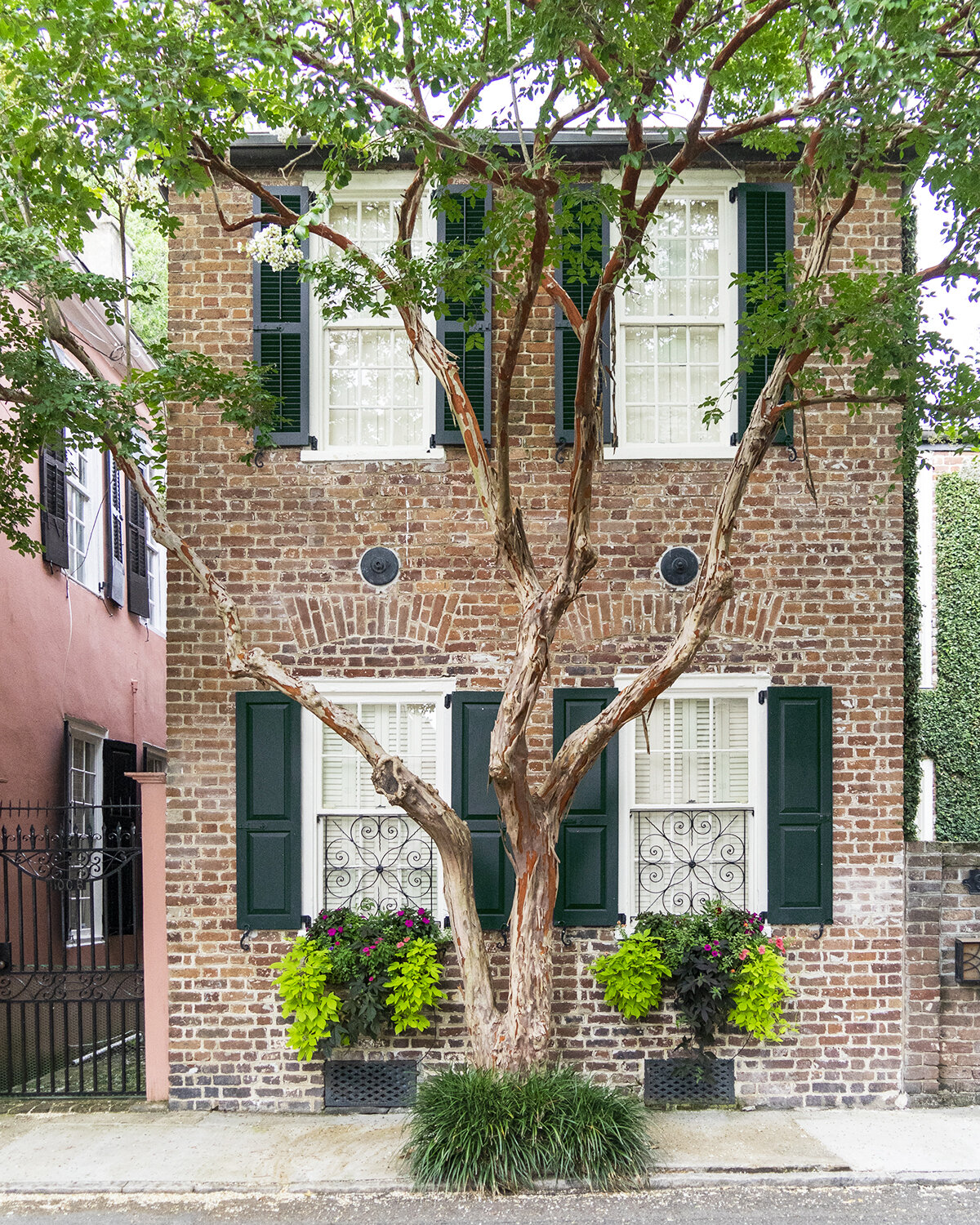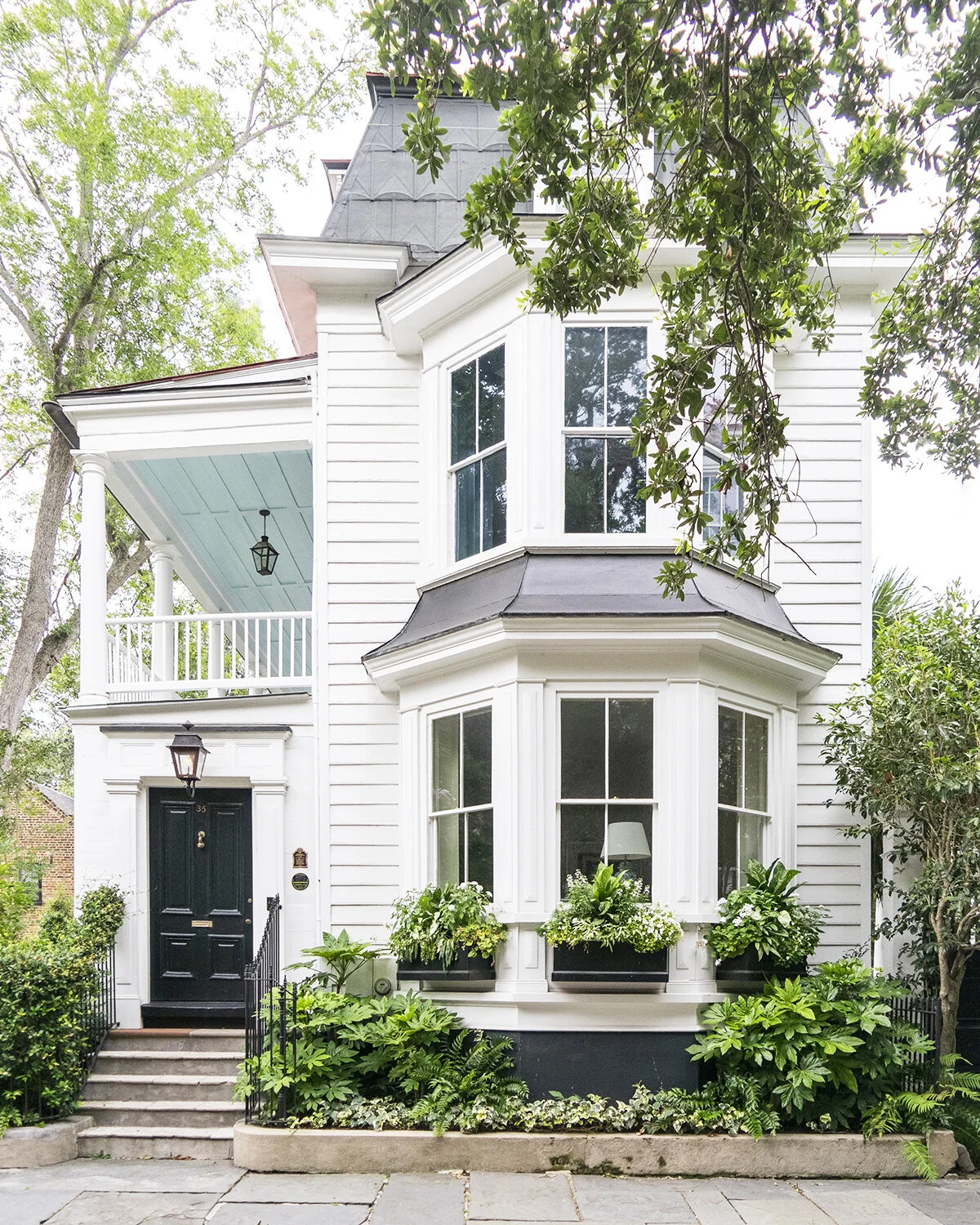Historic Paint Colors of Charleston
Walking around the historic heart of Charleston, you’ll see plenty of gorgeous old homes and buildings. One thing that catches attention is the colorful paints used on these structures: from the signature pastel hues of Rainbow Row to the darker shades of trims, doors, and shutters, Charleston’s palette is a distinctive one. These are some of the colors you’ll see in the historic district:
Charleston Green
We can’t not talk about the color named for the city itself. Charleston green, upon first glance, typically looks like a faded black or a very dark green. There are local stories that the color came about during Reconstruction - that Charlestonians were given black paint for use in rebuilding the city after the Civil War. Some claim that the color came about when yellow pigments were added to the black as a way to dilute the paint and make it last longer. However, black pigments are typically the cheapest, so this wouldn’t make sense as a cost-cutting measure. Historians and paint analysts have found that what we know today as “Charleston Green” was originally a bright, glossy green used on trim and shutters. The paint was colored with unstable copper acetate verdigris pigment, which over time would degrade to a dark almost-black, forming what we now call Charleston Green. You can spot this unique shade all over the historic district - it’s often used for trim, shutters, and doors.
Verdigris Green
That traditional shade of verdigris green is frequently mimicked with modern paints that won’t degrade. Sometimes called chrome green, it’s a glossy, rich green that echoes the sub-tropical plants frequently found in Charleston, and is a popular choice for trims.
Haint Blue
This pale aqua shade is now seen all over the South, but its roots can be traced back to the Gullah culture of the South Carolina lowcountry. The light greenish-blue hue is traditionally used for piazza (or, outside of Charleston, porch) ceilings. Its name, “haint blue,” refers to spirits in Gullah culture that are believed to be warded off with the color blue, though the reasoning for this varies: some sources say it’s because the blue imitates water, which the spirits are unable to cross; others say that the blue mimics the sky, confusing the spirits and leading them away from entering the house. In Gullah tradition, blue was used to paint not only ceilings, but doors, trim, window frames, and shutters; blue glass was also hung in surrounding trees. Today, there are also rumors that the color was used for porch ceilings because it repelled insects. While it’s thought that colors such as blue and green may not register as desirable as warmer, brighter colors to insects, newer research suggests that repellent qualities had more to do with the chemistry of the paints: traditional paints, made with lime, did in fact repel some types of bugs.
Today, you’ll see varying shades of blue on ceilings all over Charleston, as well as throughout the coastal South.
Creole (Bermuda) Pink
One of our favorite colors to see on houses around Charleston is a pastel pink. Sometimes referred to as Creole pink or Bermuda pink, this warm shade can be spotted in a range of tints, from a deeper coral to an airy almost-white. One of our favorite examples is known simply as “the pink house,” located at 17 Chalmers Street - in fact, it’s one of the first stops on our tour! Built sometime in the late 17th or early 18th century, it’s made of 18-inch-thick Bermuda stone, which despite rumors of its rosy hue, is actually grey-white. Today the house is stuccoed and painted to preserve the structural stone, but keeps its signature shade. There are plenty of other examples of pink architecture throughout the city, including along the Battery and Rainbow Row.
Yellow Ochre
For much of its history, Charleston would have been painted in colors derived from iron earth-based pigments, mixed into a lime wash over stucco surfaces. One common pigment would be a yellow ochre lime wash, which can still be seen all over Charleston. These warm golden hues were used for a variety of buildings, as the lime wash was relatively easy to use, had better colorfastness than oil-based paints, and its alkaline chemistry deterred certain species of pests. Today you can see instances of both traditional yellow ochre lime wash, and modern paints and finishes that mimic its hue and patina.
Sang de Boeuf
More commonly known by its English name of oxblood, this is a deep, brownish red. As such an intense color, it’s more frequently used for shutters, trims, and doors of houses in the historic district, as well as decorative arts pieces, ceramics in particular. Its history might be as gruesome as its name: there are plenty of urban legends that suggest that historically, literal cow or ox blood was mixed into paints, stucco, or brick clay to create the distinctive shade.













